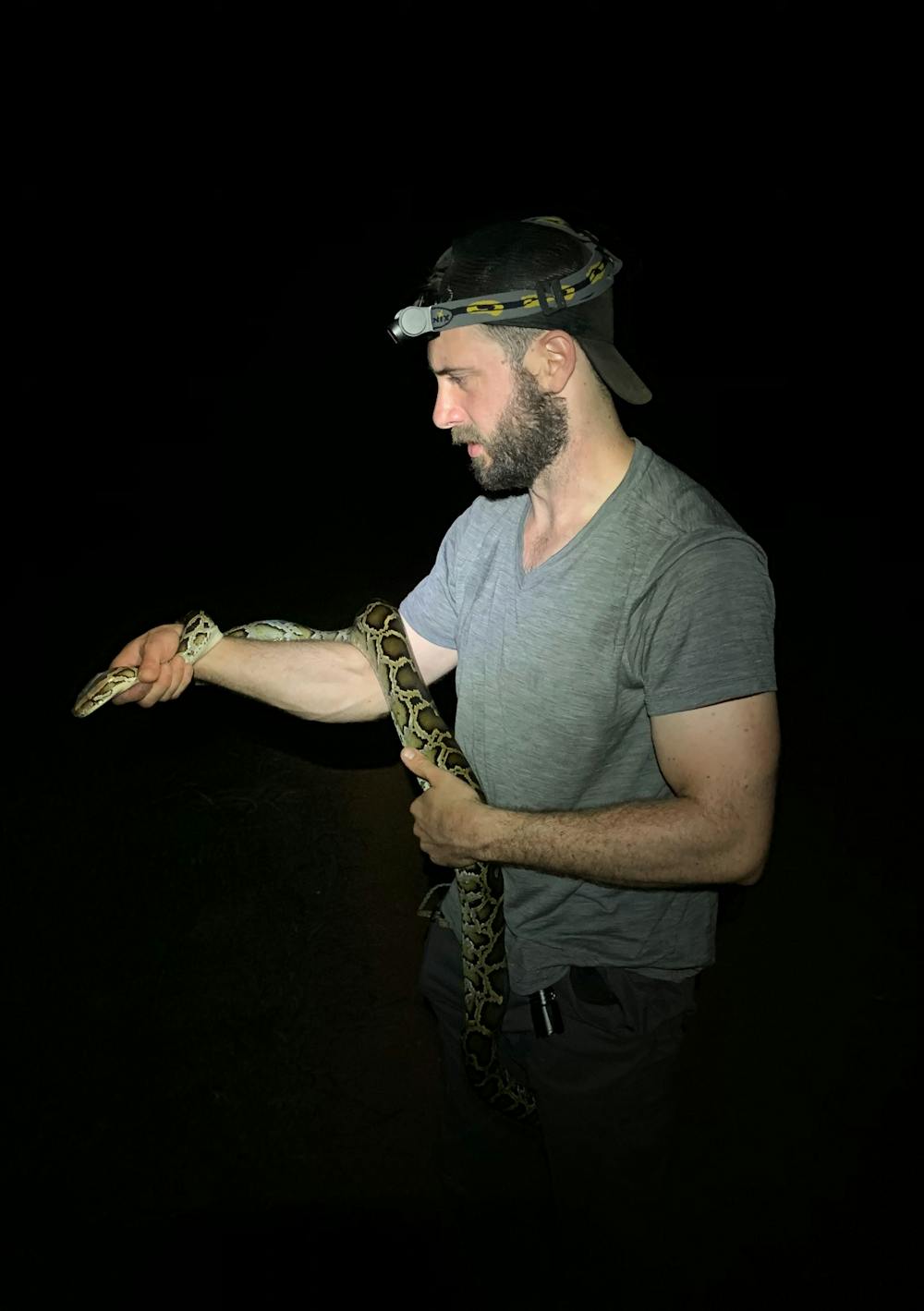A study published this month in the Journal of Experimental Biology led by University researchers used 3D imaging to visualize how boa constrictors adjust the site of breathing within their lungs to constrict and digest their meals without suffocating, according to John Capano MS’18 PhD’20, first author of the study and a postdoctoral fellow in the Fuxjager Lab at Brown.
Since a boa constrictor’s lungs sit beneath its heart, which is located in the first third of the constrictor’s length, snakes must take a very large breath in order to get fresh air all the way down their lungs, said William Milsom, professor emeritus of zoology at the University of British Columbia. Milsom was not involved in the study.
But since the body of a snake is unable to expand laterally wide enough to achieve this, “the trick for snakes is to have long saccular lungs (which allow) small lateral movements over great lengths (to) produce large breaths,” Milsom said.
“The ability to do this along the entire length of the lung, however, is constrained when they are digesting a meal,” he added. “The bolus of food moving along the digestive tract compresses the lung in that area.”
The researchers were interested in how snakes are able to overcome the challenge of breathing while eating. “One of our main questions was how can snakes constrict a prey item, which can take hours or even days, and also not die of asphyxiation,” said Hannah Weller GS.
To breathe, snakes do not use a diaphragm like humans do, according to Capano. “Snakes just use the ribcage. If you can see the ribs moving, you can guarantee that ventilation is occurring,” he said.
“What we showed is that (snakes) could actually activate different segments of ribs at will,” Capano said. “It seems to be really finely controlled.”
By tuning the rib cage and body wall movements to only the areas that are allowing air flow, snakes can control the area of lung being used to inhale, he added.
To understand rib movements that allow the boa constrictors to modulate their breathing, the researchers used blood pressure cuffs to simulate restricted rib motion during digestion and a technology called X-ray reconstruction of moving morphology, Capano said.
XROMM, which was developed at the University, is a 3D imaging technology that allowed the researchers to visualize the movement of the rib cage bones.
Using 3D models and X-ray imaging, the researchers could create animations of the boa constrictors modulating their breathing.
“We used this animation software called (Autodesk) Maya” –– the software used in Jurassic Park ––“to … create an animation of the bones moving which were a direct representation of what was happening in the living animal,” Capano said.
This study gave scientists in the field “tremendous insights into evolutionary processes as well as biomedical interventions for dealing with respiratory disorders,” Milsom said.
From a biomechanics point of view, these findings could also be applied to future research related to designing robots, according to Weller.
“There’s millions of species on this planet, and we’re just one of them,” Weller said. “I think it’s cool and respectful to try and ask questions about other (species) that are out there. It’s really a basic human thing to look at something in the natural world and wonder why it is the way it is.”

Jared is a Senior Staff Writer for Science and Research. He is a senior from Albuquerque, New Mexico studying physiology and biotechnology. Outside of The Herald he likes to fish, ride bikes and research the role of metals in human health and disease.





